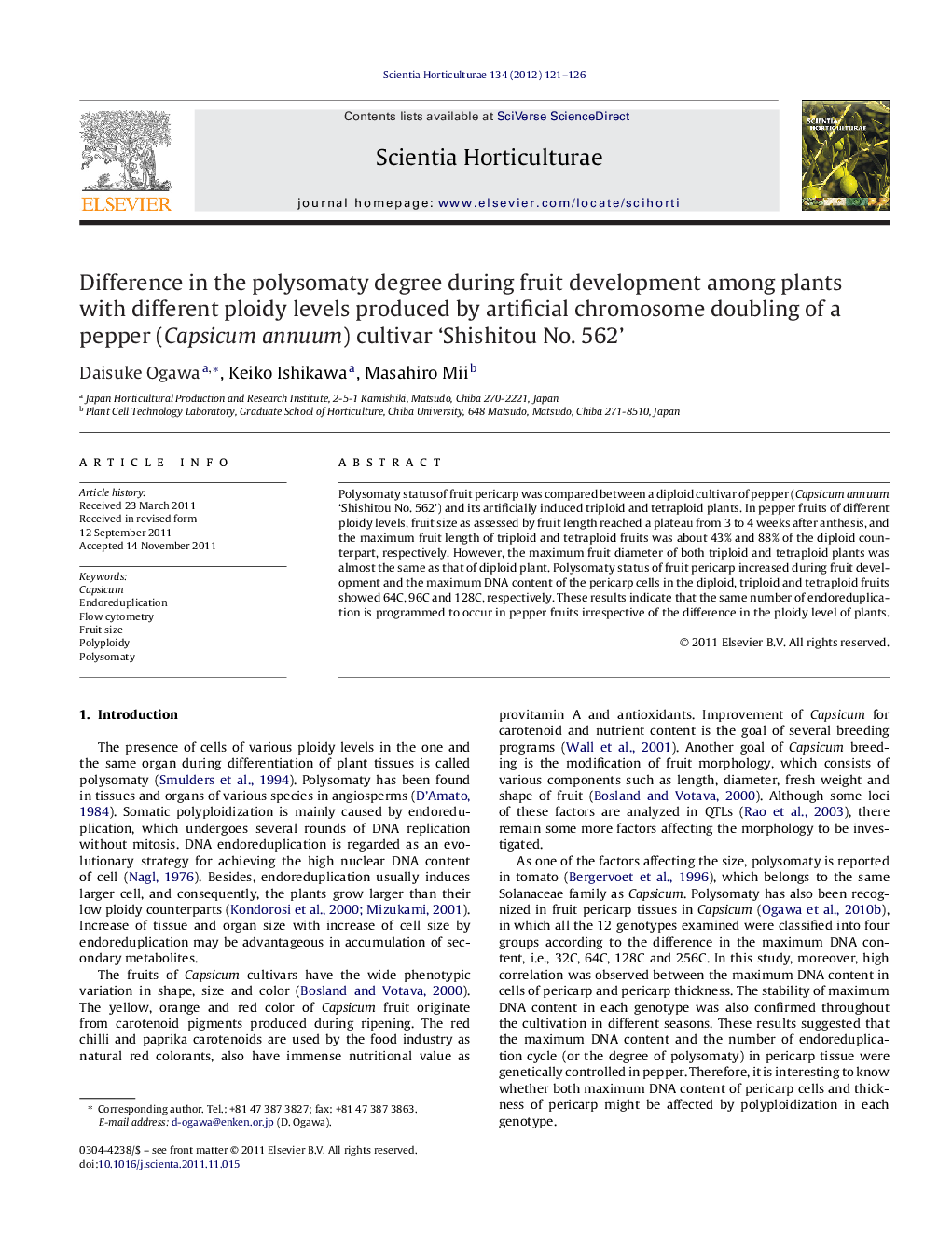| Article ID | Journal | Published Year | Pages | File Type |
|---|---|---|---|---|
| 4567767 | Scientia Horticulturae | 2012 | 6 Pages |
Polysomaty status of fruit pericarp was compared between a diploid cultivar of pepper (Capsicum annuum ‘Shishitou No. 562’) and its artificially induced triploid and tetraploid plants. In pepper fruits of different ploidy levels, fruit size as assessed by fruit length reached a plateau from 3 to 4 weeks after anthesis, and the maximum fruit length of triploid and tetraploid fruits was about 43% and 88% of the diploid counterpart, respectively. However, the maximum fruit diameter of both triploid and tetraploid plants was almost the same as that of diploid plant. Polysomaty status of fruit pericarp increased during fruit development and the maximum DNA content of the pericarp cells in the diploid, triploid and tetraploid fruits showed 64C, 96C and 128C, respectively. These results indicate that the same number of endoreduplication is programmed to occur in pepper fruits irrespective of the difference in the ploidy level of plants.
► Polysomaty status of fruit pericarp and fruit size were compared among diploid, triploid and tetraploid pepper fruits. ► The mature fruit length of triploid and tetraploid pepper was smaller than that of diploid pepper, but the fruit diameter was almost the same. ► Polysomaty status of fruit pericarp increased during fruit development. ► Although the maximum ploidy levels were different, the same number of endoreduplication was found to occur among different ploidy fruit pericarp. ► These results suggest that the number of endoreduplication might be genetically regulated trait.
